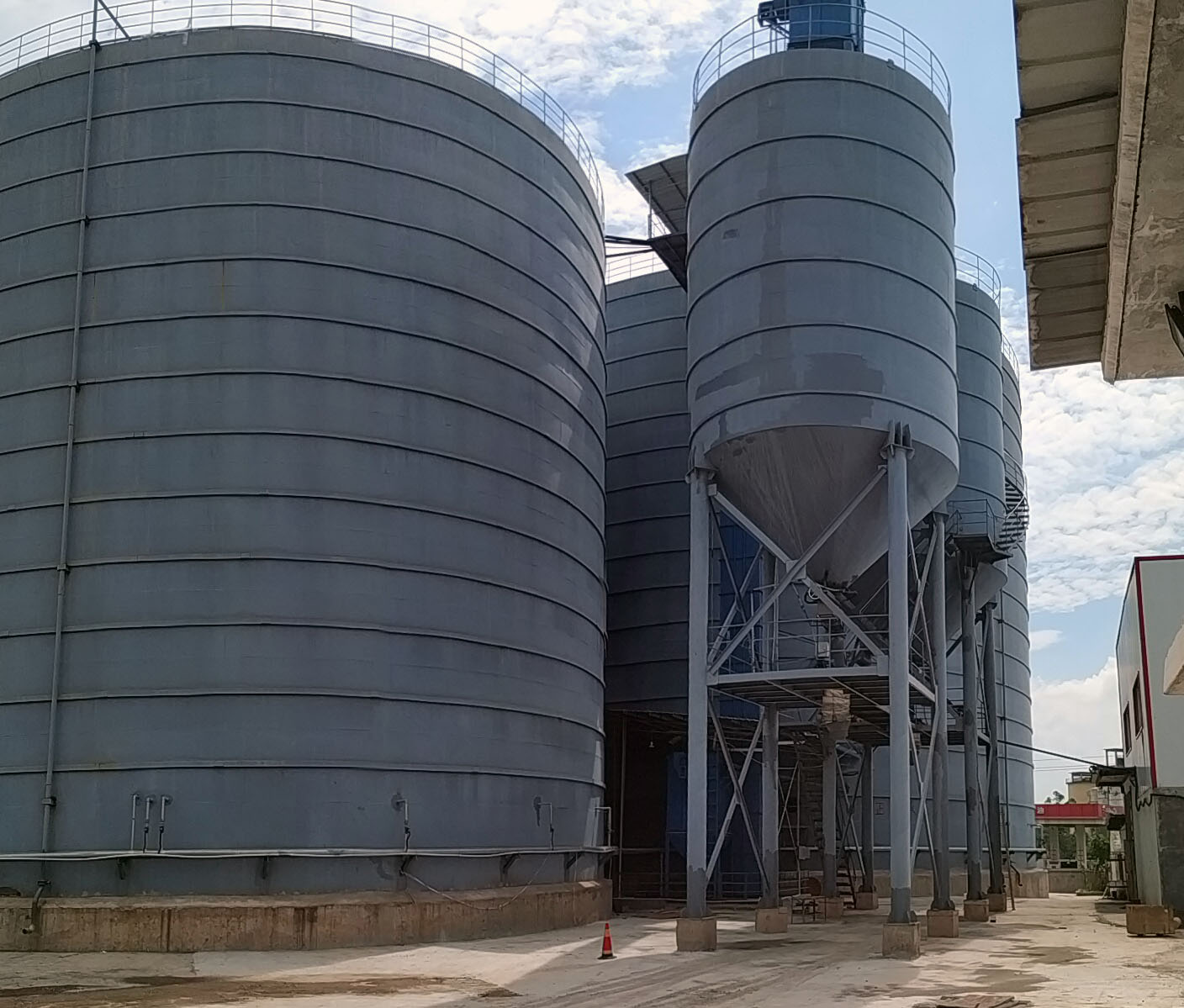How to Solve Material Compaction Problem of Fly Ash Steel Silos
Fly Ash Compaction in Steel Silos
There are many matters needing attention in the long-term storage of fly ash in large steel silos. First of all, the fly ash can not contain too much water before entering the steel silo, and the bottom of the silo must be waterproofed; secondly, the materials stored for a long time should be regularly homogenized. The frequency of homogenization is preferably two to three times a week, which enables the material in the silo to achieve a better homogenization effect.
Preferably, a fluidized rod device is installed in the steel silo for homogenization. The homogenization effect of the fluidized rod at the bottom of the silo is much more significant than that of the gas tank. The homogenization effect of the fluidized rod can enable the outflow rate of fly ash silo to reach 95% or more, which is very efficient.

After studying a large number of cases, we found that many fly ash silos will have material compaction at silo bottom and silo wall, which seriously affects the performance of the fly ash silo. The main reason for material compaction is that the gasification plate homogenization device at the silo bottom causes the cutting stock at the bottom to be sluggish. In view of this situation, we should take following measures to repair.
How to Solve the Problem
The following measures should be taken for the steel silo which has been used for a long period of time and has compacted material at the silo bottom that caused blockage.
First, the Maintenance worker should enter the steel silo from the top to the silo; check the remaining materials in the silo and the degree of material compaction. Next, the worker should use the air gun to aerate the material at the bottom of the silo to make the material reach the state of self-flow. If the material cannot reach so, it is necessary to send people to install the chute device from the side door of the silo, so that the remaining materials in the silo can be smoothly distributed to the tanker. If there is a backlog of material that needs to be discharged outside the steel silo, the transport vehicles should be arranged to transport the accumulated material to other places to prevent them from affecting the cleaning and maintenance work.
If the discharge port can not be used, it is necessary to make a temporary discharge chute for discharging during cleaning. First release the material to the decompression cone, and then open a 400mm × 500mm hole outside the decompression cone to facilitate the worker to clear the discharge port.
Workers must take safety precautions and self-protection measures before the cleaning and maintenance work begins. Workers use Φ18 brown rope or Φ18 nylon rope as the insurance rope. Attach one end of the rope to the top of the steel silo and the other end to their waist. Another 10-meter-long Φ18 Brown rope or Φ18 nylon rope is tied to the workers’ waist as an additional safety insurance.
After the worker goes down to the bottom, he does his own insurance work first and fixes the other end of the safety rope tied to his waist. Then he should observe the distribution of dust accumulation inside the silo, and let his colleague outside the silo send his tool kit with a Φ12 brown rope. The worker inside the silo should start cleaning the silo from top to bottom, step by step. When the residual material is cleaned to the level of the door at the bottom of the silo, other workers can enter from the silo door for cleaning until all the remaining materials are cleaned. Use the walkie-talkie as communication tool inside the silo.
Safety Measures during the Working Process
- All workers must operate in strict accordance with the procedures for working at heights.
- Before the work, the safety supervision department is required to conduct on-site safety operation training for the workers.
- Before going to work every day, do a good job in the safe operation of the workers and make a record.
- The equipment in the construction area should be equipped with protective facilities according to the requirements.
- All machines and lifting ropes used in the work must be inspected before they can be used.
Get In Touch With
 Español
Español
